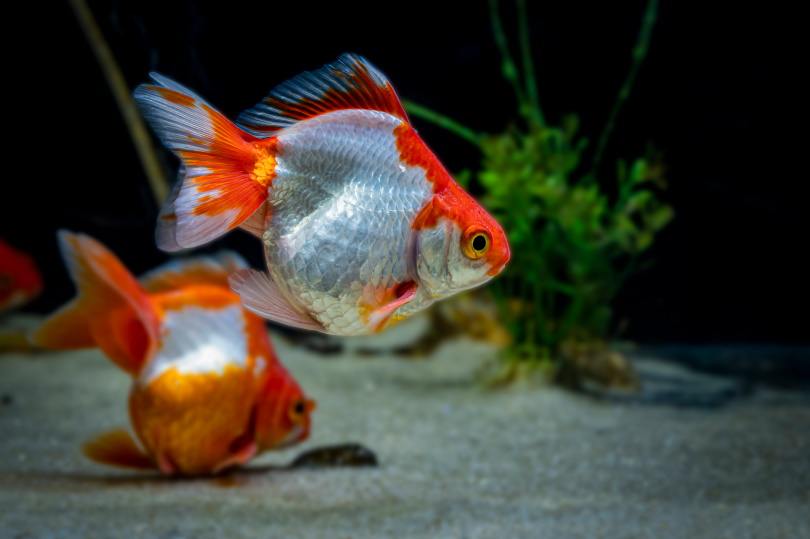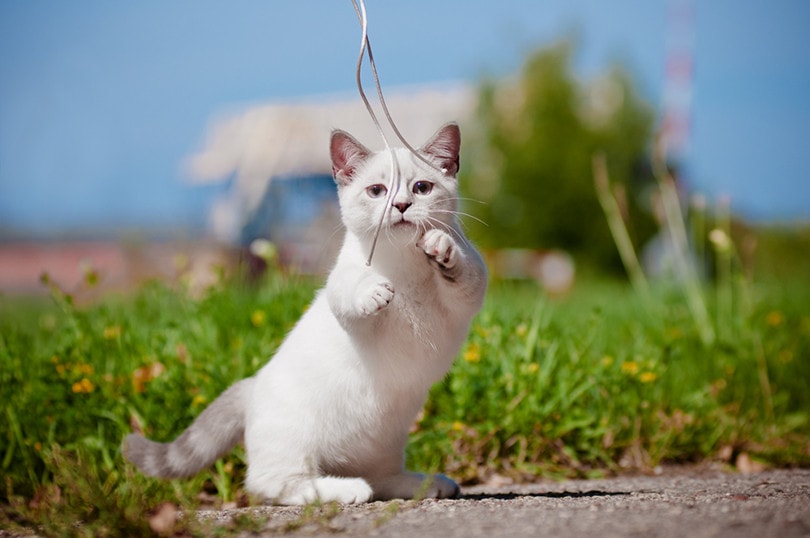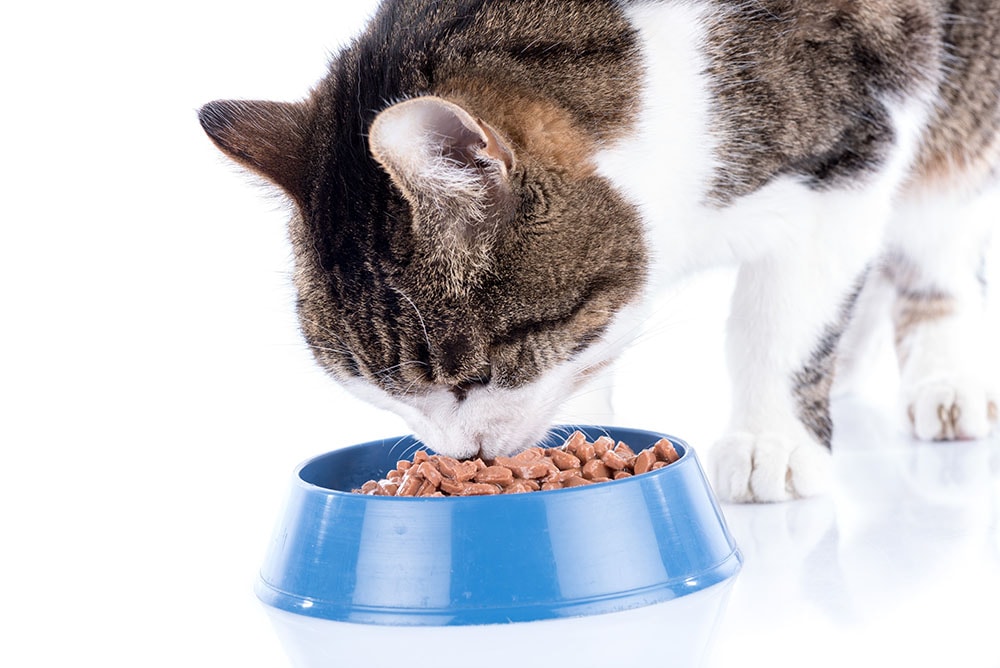VET APPROVED

The information is current and up-to-date in accordance with the latest veterinarian research.
Learn more »Everyone who has unexpectedly lost a goldfish is left wondering why their pet died and what they could’ve done to prevent it. Sadly, you may never know why your goldfish died suddenly, but there are many reasons that a seemingly healthy fish may die, including injury, illness, and poor environment.
To help you better understand why your goldfish died, we explore the most common causes here and explain what you can do to try to prevent them in the future.

Investigating Unexplained Fish Deaths
If you’ve found that your pet goldfish has died seemingly suddenly, it’s best to contact an exotic or fish veterinarian to conduct a post-mortem on your pet. This would be the absolute best way to ascertain their cause of death. Without a post mortem, understanding why your pet passed away might involve a degree of guesswork.
If you have multiple fish (such as in a pond) and suddenly find that multiple fish are dying, it’s very important to immediately seek professional advice to prevent the loss of all the fish. While waiting for a professional’s diagnosis or advice, it’s best to remove any living fish and bring them into a quarantine tank for monitoring.

The 10 Possible Reasons Your Goldfish Died
1. Natural Death
Though this seems quite obvious, it’s sometimes overlooked by fish owners. A goldfish may, at times, simply have a natural death. Owners of fancy goldfish are often dumbfounded when they find out that their fish “suddenly” passed away at the age of 15–20. This is often perceived as an unnatural death because the death of common goldfish is usually considerably longer.
However, it’s important to keep in mind that fancy goldfish, and many of the newer stocks of common goldfish, don’t live as long as once thought. Common goldfish that are extensively inbred (for instance, fish raised as feeder fish) are often intensively inbred and as a result, often fail to attain the lifespan of individuals bred with consideration given to the breeding stock to ensure the healthiest possible offspring.
Likewise, all fancy goldfish varieties are man-made hybrids and are the result of selective breeding. None of them exist naturally, and centuries of selective breeding has resulted in pets which may lack the genetic capacity to live as long as their crossbred counterparts.
2. Being Attacked
If this is the case, it’s likely that your fish will have visible signs, like torn fins or bleeding. Bullying and aggression often happen routinely before leading to the death of a fish, but this only really happens if you house your goldfish with incompatible, aggressive tank mates. For instance, a goldfish in a cichlid tank would likely be repeatedly bullied and nipped at. However, death from a single attack in such a circumstance is quite rare (unless your goldfish has no place to hide or seek cover).
The more realistic attack threat is in a pond setup, where wild animals gain access to your fish and decimate their numbers in one fell swoop. For example, otters in some parts of the world are notorious for doing this in urban areas.
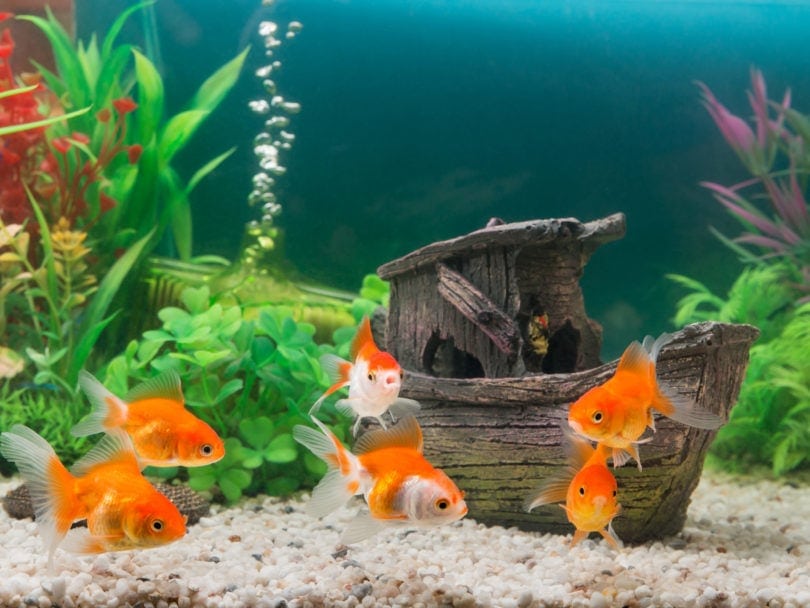
3. Internal Parasites
You can often see external parasites like ich and flukes with the naked eye. However, internal parasites are much harder to spot and may not even show signs until your goldfish is extremely ill. Parasites weaken the immune system, allowing for other infections. They also take energy away from necessary body functions, and some parasites may even damage internal organs. Sometimes, the signs of internal parasites are subtle and nondescript, like fin clamping and lethargy, which makes it difficult to identify and treat them.
The prevention of parasites is your best weapon against them, and the easiest way to do this is to quarantine new fish before they’re moved to the main tank with your other fish. There are multiple over-the-counter antiparasitic medications and treatments that can be used prophylactically. However, using medications as a prophylaxis in fish isn’t advised anymore and is considered dated advice, because this can lead to parasites gaining resistance to the medication and becoming even more difficult to treat in the future.
4. Dropsy
Contrary to popular belief, dropsy is a sign of another illness, not a disease on its own. Dropsy is a clinical sign (often at the end-point of a disease) which is caused by body fluid collecting in the fish’s abdomen. This leads to the characteristic “pinecone” look that a fish with dropsy has as their belly swells and scales turn outward. Fish exhibiting signs of dropsy are already gravely ill, and once it has set in, the mortality rate is exceedingly high.
Treatment options for dropsy are very few, and often, humane euthanasia is recommended. If you do wish to address dropsy, you should do so under the instruction of your veterinarian. More importantly, you should ascertain the cause of dropsy to save the rest of your fish from also succumbing to whatever disease (if infectious) has taken hold in your aquarium.
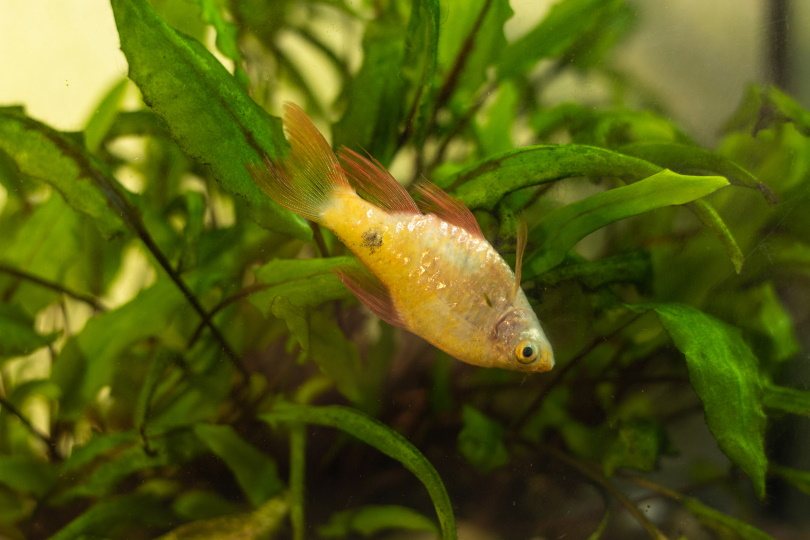
5. Ammonia Poisoning
Ammonia is a waste product that comes from waste excreted by your goldfish and decaying organic matter, including plants and animals. It’s usually removed from your tank by beneficial bacteria.
There are several major causes of ammonia buildup in tanks: overstocking an aquarium, inadequate filtration, and lack of beneficial bacteria (common in new tanks). Goldfish create a heavy bioload in an aquarium, so you need to ensure that your filtration system is strong enough to handle all their waste, especially if your tank is overstocked.
A grave error that many people make when setting up a new tank is not performing a tank cycle, which colonizes the beneficial bacteria. Without these bacteria, ammonia begins to build up in the tank rapidly. It’s also possible to crash the cycle of an already-established tank. This commonly happens with inappropriate filter media cleaning or changing or allowing your filter media to dry out. Beneficial bacteria live on surfaces that have a water current. This means they live in the filter media, filter, substrate, and tank décor, but they don’t live in the water of the tank.
The earliest signs of ammonia poisoning are your fish’s gills appearing red, and your fish gasping for air at the water’s surface. Ammonia poisoning eventually leads to black splotches appearing on your goldfish, which is an indicator that tissues have necrotized and have been “burned” by the ammonia poisoning.
Make sure you are routinely checking your water parameters to ensure that your tank is cycled and waste products aren’t building up. If you suspect ammonia poisoning (also known as New Tank Syndrome), immediately perform a large (50%) water change for your fish, check the ammonia levels, and take appropriate steps to keep ammonia levels low until a cycle is established. Options include increasing the tank’s size, decreasing the number of inhabitants, using commercial cycling products, and repeatedly performing water changes to keep ammonia levels low.
- Related read: Do Goldfish Need a Filter?
6. Nitrite Poisoning
Nitrite is a part of the nitrogen cycle as well. Nitrite is produced when the beneficial bacteria in your aquarium process ammonia; however, the bacteria that process nitrite are different from those that process ammonia. As such, nitrite poisoning is often a sequel to ammonia poisoning.
Nitrite poisoning signs include lethargy, listlessness, air gulping, brown coloration around the gills, and rapid gill movement. Check your water parameters routinely to ensure that your tank’s nitrite levels are staying under control. In a fully cycled aquarium, you should have no ammonia or nitrite.
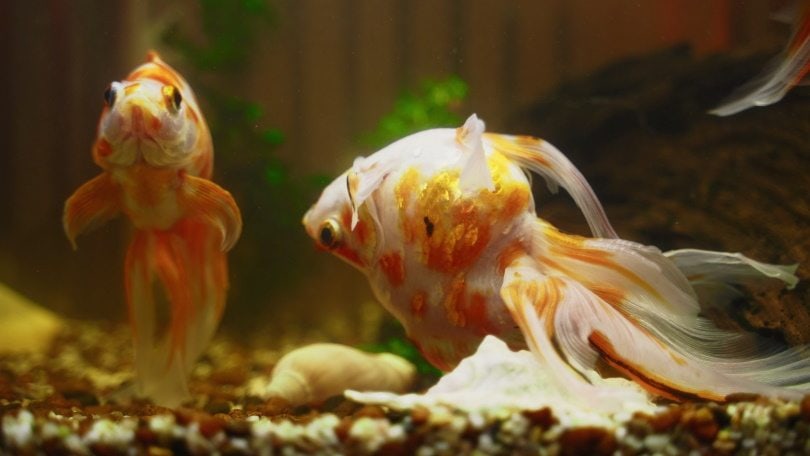
7. Rapid Changes in Water Parameters
Sudden spikes in ammonia and nitrite levels aren’t the only water parameters that can lead to the demise of your fish. Rapid swings in pH levels can be caused by new tank water, the addition of pH-altering minerals, or the accidental addition of an acidic or alkaline substance to your tank, such as if you use a bucket that once had cleaning chemicals to add new water to your tank.
Chlorine and chloramine are additives in tap water that can potentially kill goldfish. These can get into your tank if you add untreated tap water when performing water changes, though they can even be present in well water and bottled water. You should always use chemical additives that remove chlorine and chloramine from water before you add it to your tank.
8. Temperature Extremes
Rapid changes in your aquarium’s temperature can kill your fish. This is most commonly seen when a heater malfunctions and “cooks” the tank, overheating it to a point that kills the fish. It’s not a guarantee that it will kill all fish in the tank, so the loss of only a few fish should still be investigated. If your tank is kept somewhere that isn’t climate-controlled, like a garage or shed, or if your electricity goes out in inclement weather, your tank may experience rapid temperature swings.
You can use an aquarium thermometer to determine the temperature of your tank water to make sure it’s staying in a safe range.
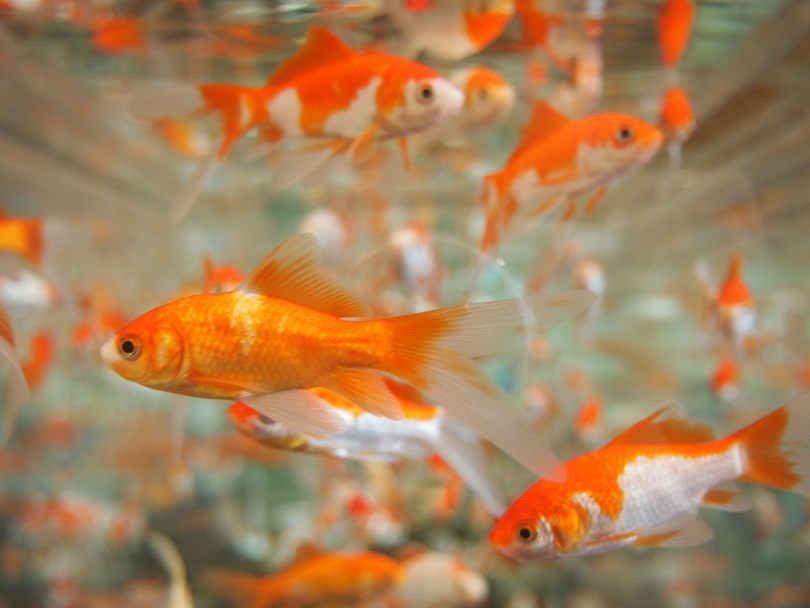
9. Electrocution
When you consider the number of electronics in and around an aquarium, this one probably doesn’t come as much of a surprise. Aquarium electronics are intended for use around water, but it’s not unheard of for them to malfunction or wear out and send electricity into the tank. This most commonly occurs with a malfunctioning heater, but anything that touches your tank water that has an electrical current is at some level of risk for electrocuting your tank. If there is any possibility that this has occurred, do not touch your tank water to find out. Electrical currents can be dangerous, and sticking your hand into electrocuted water will harm you.
If you think that there’s any chance that your tank was electrocuted, shut off all electrical currents, preferably at the fuse box, and wait a short while before attempting to touch the tank or tank water. You should wear insulting gloves prior to handling the water to ensure that you don’t get an electric shock; remember that water is an amazing conductor of electricity.
10. Old Tank Syndrome
Sometimes, you might realize that only the new fish you add to your tank or pond are passing away unexpectedly. This can happen in older tanks and is often referred to as “Old Tank Syndrome”. Over time, gradual evaporation of water will change the salinity of the water in your aquarium, which may not be an issue for your existing fish (as they would have adjusted to these parameters as they gradually shifted). However, it can definitely lead to an inhospitable environment for new fish.
To prevent such an occurrence, it’s best to conduct partial weekly water changes (around 20–25%) in your aquarium at all times, to ensure that parameters remain constant over time. It’s also best to check all relevant water parameters (ammonia, nitrite, nitrates, temperature, pH, dH, salinity) prior to adding new fish into an aquarium. New fish should also be slowly acclimated to your aquarium’s water prior to being introduced to the tank.

Conclusion
If you’ve experienced the sudden loss of a goldfish, it can be sad and frustrating. Finding out what happened can be difficult, especially if there are other animals in the tank that appear fine. Keep in mind that your goldfish could have had an underlying condition that you never saw signs of.
Regardless, it’s good practice to check your water parameters to ensure that your water quality is high and your tank is cycled. Whether your goldfish died after a water change or being moved to a new tank, we hope that this post has been helpful to you as you make plans to move forward.
Looking to adopt a new goldfish? Check out these adorable breeds:
Featured Image Credit: Sad Agus, Shutterstock
